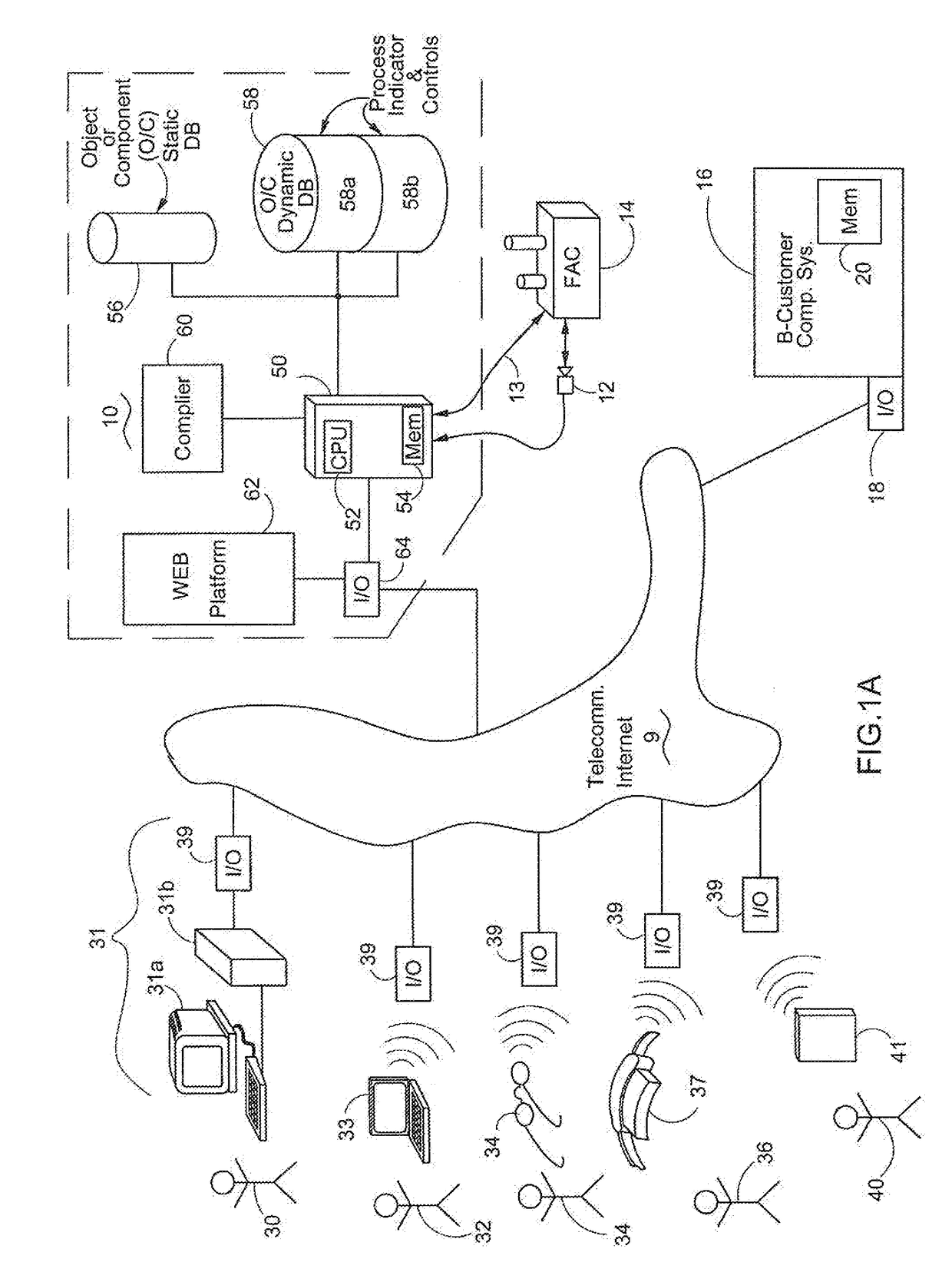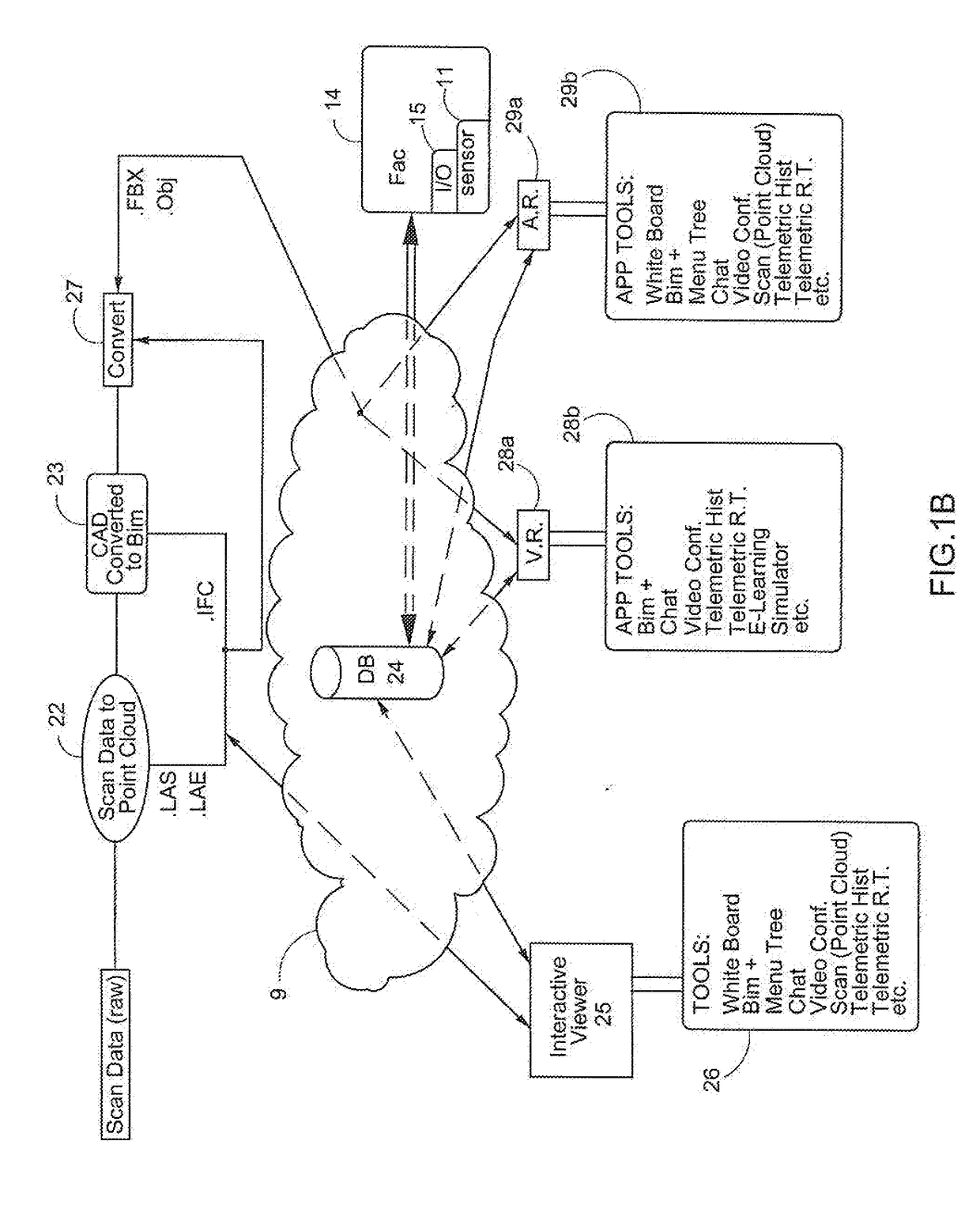Method and System for Converting 3-D Scan Displays with Optional Telemetrics, Temporal and Component Data into an Augmented or Virtual Reality BIM
a technology of augmented or virtual reality and 3-d scan displays, applied in image enhancement, image analysis, instruments, etc., can solve the problems of incompatibility, inability to accurately show the facility as-built, and facility renovation, modification and repair, etc., to improve processes and increase efficiency.
- Summary
- Abstract
- Description
- Claims
- Application Information
AI Technical Summary
Benefits of technology
Problems solved by technology
Method used
Image
Examples
Embodiment Construction
[0045]The present invention relates to a system and a method for converting 3-D as-is scan data into either an augmented or virtual reality presentation of a building information model (“BIM”) which spatially matches the 3-D as-is scan data. Various modules enable the user to integrate telemetric data into the AR or VR BIM display and presentation data or to integrate temporal data which is based upon 3-D scan data obtained at two disparate time frames. The telemetric data or changeable data is converted into dynamic component data and the user can view the dynamic data by activating a data object link on the visually presented component in the BIM virtual display. With respect to the temporal data, two compatible BIM models or plans are generated over two disparate time frames and these two BIM models are spatially aligned to create the virtual reality BIM data. The present invention handles AR and VR data for industrial plant facilities, industrial processing platforms, commercial...
PUM
 Login to View More
Login to View More Abstract
Description
Claims
Application Information
 Login to View More
Login to View More - R&D
- Intellectual Property
- Life Sciences
- Materials
- Tech Scout
- Unparalleled Data Quality
- Higher Quality Content
- 60% Fewer Hallucinations
Browse by: Latest US Patents, China's latest patents, Technical Efficacy Thesaurus, Application Domain, Technology Topic, Popular Technical Reports.
© 2025 PatSnap. All rights reserved.Legal|Privacy policy|Modern Slavery Act Transparency Statement|Sitemap|About US| Contact US: help@patsnap.com



